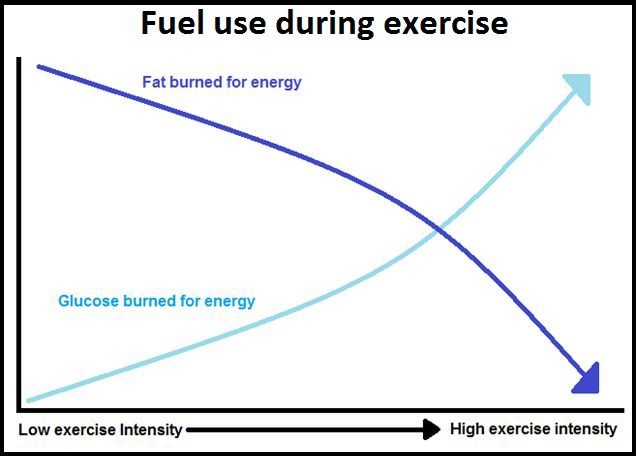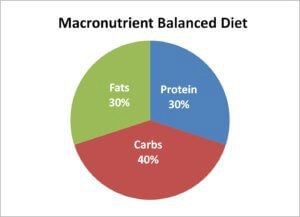In my work as an Osteopath, I deal with injured individuals with a large variety of athletic experience, from weekend warriors, absolute novices, through to highly skilled athletes. One aspect which is of great importance to me is that my patients understand the principles associated with changing or introducing exercise, without unnecessary risk of injury. Today I’ve written about the 3 biggest rocks to help people who are ramping up, or returning to exercise, to do so without the frustrating setbacks of injury.
#1: Nutrition: Changing Your Eating Habits After Your Workout
Probably the most underestimated factor affecting your recovery and injury susceptibility is the food you use to fuel and replenish after a workout.
Finding a diet that suits you is an individual process. However, when we start talking about exercise, guidelines become a little more structured and easy to interpret.
The type of exercise you do will determine the ratio of Fats/Carbs/Proteins (“Macros”) you should consume.
Fats, Carbs and Protein all have specific roles during exercise and in post-exercise recovery. A simplified summary is as follows:
- Fats are the body’s primary fuel source when you are at rest or low intensity exercise
- Carbs are the body’s primary fuel source during intense activity
- Protein is required to rebuild muscle and tissues in the body, after exercise which leads to muscle break down

So from this understanding, we can deduce how we should be altering our eating patterns based on days we exercise:
- Low intensity activity (walking, yoga, tai chi, gentle cycling): Balanced diet (higher fat): Ensure you have good, healthy fats included in your diet such as fatty fish, nuts and seeds, avocado and using naturally formed cooking oils such as olive oil, ghee or coconut oil
- Traditional strength/powerlifting training: High carb, High Protein. Make sure you replenish your carbohydrate and protein stores after exercising. This may include unrefined carbohydrates such as potato, sweet potatoes or rice; as well as high quality protein such as eggs, grass-fed beef, chicken, fish. Plant-based consumers can look to sources such as beans and lentils, however many plant-based athletes require supplementation to achieve adequate protein intake.
- High intensity workouts (F45, CrossFit, Circuits): High Carb, Medium-high Protein. The aim here is systemic and muscular fatigue. Carbohydrates are extremely important for this type of exercise, as well as protein. (Suggestion as above)

Always eat within 1 hour after you’ve finished your workout. Your body has a recovery window which lasts roughly 1 hour, where it ravenously takes up all the energy from your food to help repair and restore. If you do high intensity activity and aren’t eating afterwards, your recovery will likely be incomplete, and your chances of injury increased.
*Macronutrients are only one lense through which to approach nutrition. This does not disregard the importance of a wholefoods, nutrient dense diet
#2: Progressive Loading: Don’t Start Where You Left Off!
When getting back into exercise after some time off, it’s important to remember that we can’t necessarily jump back into it at the same intensity we were at before. Time off from exercise creates de-conditioning. Even if you have replaced your gym workout for, say, running, the requirements and loads placed on the body will take time to adapt to. Many people will quickly find themselves on the sidelines again if they attempt to pick up straight where they left off the last time they performed their class or workout.
It is therefore important to start slow when getting back into exercise, and abide by the principle of progressive loading.
Progressively loading simply means we systematically increase the demand on our body over time, rather than a sudden jump in intensity.
While this sudden jump doesn’t guarantee injury, research in this area led by Tim Gabbett indicates that, by jumping head first into exercise without proper progression, we increase our chance of injury.
So if you’ve had a few months off, play it safe. Start with 50% of your previous intensity, and see how your body responds first. If you feel great, then increase by 5-10% each session until you’re back to where you were.
#3: Movement Preparation: Ensure You Are Mobile Enough
Whilst fundamental #2 focuses on conditioning the body to sustain movement without injury, #3 emphasises our ability to actually go through the movement itself. The same traps apply here with respect to assuming that we can instantly move as well as we did previously. Mobility warm-ups make it easier to get into the positions you require, and ensure that a lack of mobility doesn’t force you into injury-prone positions.
We will use a basic mobility warm-up for a squat as an example. See the video below.
If you are based in Melbourne and would like some professional support whilst getting back into your fitness regimen, the team at Melbourne Osteopathy Sports Injury Centre has put together this generous offer to help you avoid those pesky injuries as you return to exercise.
About the Author:
Dr. David Sokoloff is a passionate Osteopath who thrives on addressing the root cause of each patient’s issue. He enjoys the challenge and reward of tackling long-standing, complex complaints utilising a movement-driven approach to provide long-term, sustainable outcomes.
David Sokoloff
B.App.Sci (Clinical Sciences), M.H.Sc (Osteopathy)









